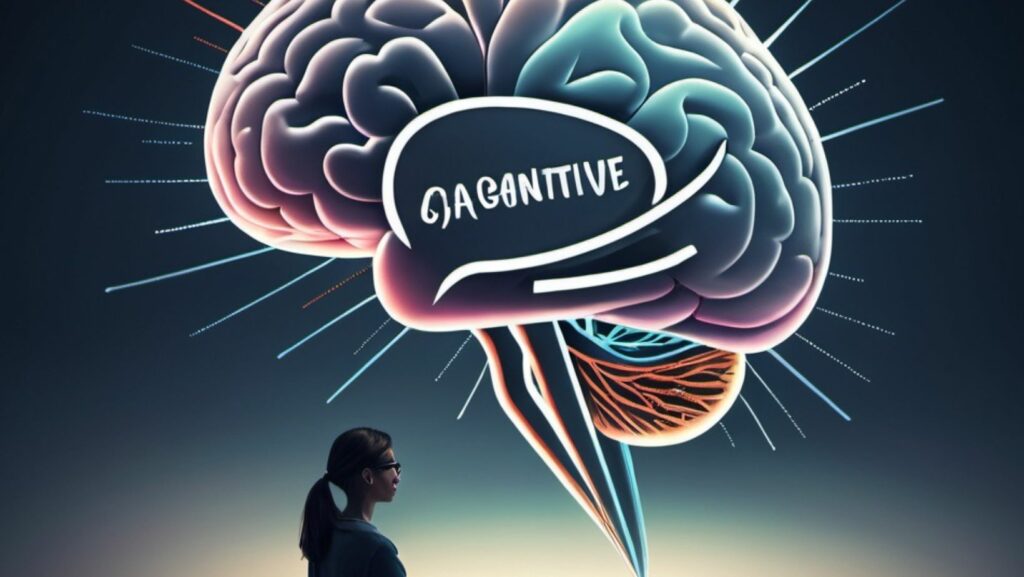Cognitive therapy and rational-emotive therapy are both evidence-based approaches to psychotherapy that share similarities but differ in their objectives, techniques, and theoretical frameworks. Cognitive therapy aims to modify maladaptive thoughts and beliefs that lead to emotional distress by using cognitive restructuring and behavioral experiments. In contrast, rational-emotive therapy focuses on challenging irrational beliefs that underlie dysfunctional emotions and behaviors through disputing, reframing, and humor.
While both therapies assume that thoughts influence emotions and behavior, cognitive therapy views them as interconnected whereas rational-emotive therapy emphasizes a direct link between thoughts and feelings. Additionally, cognitive therapy targets automatic negative thoughts while rational-emotive therapy tackles core irrational beliefs.
Moreover, both methods stress the importance of active participation, homework assignments, and role-playing in the therapeutic process. However, cognitive therapy is more directive whereas rational-emotive therapy is more confrontational.
To benefit from either approach effectively, individuals need to engage in a collaborative relationship with their therapist, identify their problematic thinking patterns or beliefs as well as their consequences on mood or behavior, challenge distorted assumptions with evidence-based arguments or logical errors detection and replace them with more constructive ones. Ultimately it’s the clients’ ability to internalize these new mindsets that bring long-term benefits.
Two therapies, one big difference: Cognitive therapy changes your thoughts, rational-emotive therapy changes your emotions.
how is cognitive therapy different from rational-emotive therapy?
To understand the differences between Cognitive Therapy and Rational-Emotive Therapy with their distinct sub-sections, you need to understand their approach and theoretical basis. Additionally, it’s important to know the goal of therapy for each, and whether they place emphasis on thoughts and emotions or beliefs and attitudes. The role of the therapist and the practical applications of each therapy are also important factors to consider.
Approach and Theoretical Basis
Cognitive Therapy and Rational-Emotive Therapy have distinct approaches and theoretical underpinnings. Cognitive Therapy synthesizes behavioral and cognitive theories that examine subjective perspectives while promoting skill development. In contrast, Rational-Emotive Therapy emphasizes a more philosophical perspective that addresses the various flaws in human thinking as the cause of negative emotions.
The theoretical basis of Cognitive Therapy lies in the idea that individuals’ reactions to events are shaped by their thoughts rather than the events themselves. This premise focuses on restructuring distorted thought patterns through exercises designed to modify cognitive content, identified as automatic thoughts, or replacing them with more rational thoughts identified as schema. On the other hand, rational-emotive therapy posits that emotional distress is often due to irrational beliefs, counterproductive attitudes or self-defeating behaviors, which result from unreasonable assessments of situations.
Another unique aspect of Cognitive therapy is the collaborative approach between therapist and client towards developing specific treatment objectives based on clients’ individual needs. In contrast, Rational-Emotive therapy employs persuasion strategies founded on dialogues aimed at identifying and changing irrational beliefs using dialectical controversy techniques.
What do you call therapy that aims to change your thoughts and behaviors? Cognitive Therapy. What do you call therapy that tells you to quit whining and take responsibility? Rational-Emotive Therapy.
Goal of Therapy
The ultimate purpose of therapy is to help individuals improve their overall well-being. One aspect of Cognitive Therapy is to help patients recognize and shift patterns of thinking that are causing dysfunctional emotions or behaviors. On the other hand, Rational-Emotive Therapy focuses on identifying and challenging irrational beliefs in order to eliminate self-defeating thoughts or behaviors.
In Cognitive Therapy, the goal is to promote logical and realistic reasoning by forming new perspectives towards negative experiences and feelings. Whereas, Rational-Emotive Therapy aims to change the way individuals see themselves, the world around them, and their beliefs about what causes events in their lives.
One unique difference between these two therapies is that Cognitive Therapy emphasizes problem-solving strategies through organized behavioral experiments, while Rational-Emotive Therapy uses confrontational methods like Socratic questioning and persuasion techniques.
Interestingly, Rational-Emotive Therapy has a distinctive history as it was one of the earliest forms of cognitive-behavioral therapy. It was developed by Albert Ellis in 1955 after he became disillusioned with traditional psychoanalytic therapy practices. Ever since its inception, it has been widely used and studied for its effectiveness in treating various mental health conditions.
“Emotions are like opinions – everyone has them, but not everyone should share them with their therapist.”
Emphasis on Thoughts and Emotions
The core of Cognitive Therapy and Rational-Emotive Therapy is their focus on the thoughts and emotions of individuals. Both therapies aim to identify and address negative thought patterns that contribute to negative emotions and behaviors in individuals. However, Cognitive Therapy predominantly emphasizes identifying distorted thinking patterns while Rational-Emotive Therapy focuses on finding irrational beliefs that lead to emotional distress. Through these therapies, the aim is to help individuals develop a more positive outlook towards themselves and their lives.
Moreover, Cognitive Therapy aims to teach clients how to identify their thoughts, evaluate their validity, and replace them with more positive ones. On the other hand, Rational-Emotive Therapy is all about challenging irrational beliefs by creating a dialogue between a therapist and an individual. This type of therapy has its roots in the belief that people often perceive themselves or others differently from how they genuinely are, leading to unnecessary negative feelings.
Interestingly, both types of therapy have been found useful for treating several mental health conditions such as anxiety disorders, depression, phobias or even addictions.
In 1930s Albert Ellis developed rational emotive therapy (RET). In one instance he confronted his fear of approaching women by sitting on a park bench for hours whilst striking up conversations with any woman who passed by.
Changing your attitude is like changing your underwear, sometimes you just need a fresh perspective.
Emphasis on Beliefs and Attitudes
Cognitive Therapy and Rational-Emotive Therapy both focus on beliefs and attitudes, which play a significant role in shaping an individual’s behavior. However, the emphasis on these factors differ in approach. While Cognitive Therapy examines and challenges irrational thoughts to modify behavior, Rational-Emotive Therapy emphasizes identifying and uprooting irrational beliefs that lead to maladaptive thinking patterns. Essentially, both approaches recognize the importance of addressing beliefs and attitudes, but their methods are distinct.
What sets Rational-Emotive Therapy apart is its assertion that individuals directly influence their emotional state through their thought patterns; it holds that people create their own emotional states based on how they interpret events. This technique encourages patients to challenge negative thinking by disputing irrational or unhealthy beliefs and replacing negative self-talk with positive affirmations.
Pro Tip: Identifying maladaptive thought patterns takes time and effort. Encourage clients to practice patience when challenging negative thinking, be kind to themselves throughout the process, and celebrate small steps towards more rational belief systems.
Therapists: because sometimes you just need a professional to tell you that your thoughts are irrational and you’re being a bit of a drama queen.
Role of the Therapist
The therapist plays a vital role in the success of both cognitive therapy and rational-emotive therapy. In cognitive therapy, the therapist acts as a collaborator, guiding the client to recognize and challenge negative thought patterns. The therapist helps the client develop alternative, healthier ways of thinking and behaving. In rational-emotive therapy, the therapist is more directive and confrontational, challenging the client’s irrational beliefs head-on. The goal is for the client to develop insight into their flawed thinking and replace it with more rational beliefs.
One key difference in the role of the therapist between these two therapies is the level of confrontation used in rational-emotive therapy versus cognitive therapy. While both aim to help clients challenge their thoughts, REBT therapists use more direct methods such as disputing irrational beliefs outright or through deviant exercises.
It is important for therapists to understand which approach works best for each individual client. For example, a collaborative approach may work better with individuals who are hesitant to confront their beliefs directly while a directive approach may be more effective with motivated clients seeking tough love rather than mere emotional support.
To best serve clients’ needs, therapists should remain adaptable in their approach while staying true to their respective therapeutic modality’s principles and values. By prioritizing this balance, therapists can create meaningful change and lasting growth in their clients’ lives using either or both Cognitive Therapy or Rational-Emotional Therapy techniques alongside other contributing tools like communication training or behavioral interventions depending on case-by-case basis evaluation of respective patient requirements.
Whether you need to rewire your brain or simply reframe your thinking, these therapies have got you covered – like a mental chiropractor and optometrist all in one.
Practical Applications
Applications in Real-Life Settings
Cognitive Therapy and Rational-Emotive Therapy have unique practical applications. Let’s explore them through a table without ceasing the possibilities of their synergy.
| Cognitive Therapy (CT) | Rational-Emotive Therapy (REBT) |
| Cognitive therapy focuses on changing thought patterns leading to changes in behavior and emotions. | Rational-Emotive therapy’s primary focus is on addressing irrational beliefs that cause emotional distress. |
| Cognitive therapists use Socratic questioning and guided discovery techniques to challenge unhelpful thoughts. | REBT practitioners employ disputing and persuasion to correct self-defeating beliefs. |
It is essential to note that although CT primarily deals with negative automatic thoughts, REBT can also dig deep into one’s core beliefs systems. Both therapies are effective in treating various mental disorders such as depression and anxiety. Through proper assessment and feedback, these therapies help individuals live a more fulfilling life.
Did you know that Ellis, the founder of REBT, believed that people could learn how to think more rationally? Both therapies focus on changing faulty thinking patterns, but at least you can cry on your therapist’s couch during Cognitive Therapy.
Similarities between Cognitive Therapy and Rational-Emotive Therapy
To understand the similarities between cognitive therapy and rational-emotive therapy with cognitive-behavioral therapy, historical context, and evidence-based practice as solutions. These subsections offer insight into the fundamental principles and empirical support that underlie these modalities.
Cognitive-behavioral Therapy
Cognitive-behavioral therapy (CBT) is a form of psychotherapy that is based on the theories of both cognitive and behavioral psychology. CBT focuses on the present rather than delving into past issues, helping individuals recognize negative thoughts and behaviors, and redirecting them to more positive ones. The therapy emphasizes on changing patterns of behavior and thinking.
Cognitive therapy is a type of CBT that primarily targets identifying negative thought patterns and replacing them with more constructive ones. Through this approach, the individual learns to re-evaluate their beliefs, perceptions, and attitudes.
Rational-Emotive Therapy (RET), on the other hand, focuses on disputing irrational beliefs that lead to negative emotions like anxiety or depression. RET challenges misconceptions in favor of realistic perspectives.
An overlap between CBT and RET relies on identifying negative thought patterns which enhances self-awareness leading to personal development. While Cognitive therapy’s focus may be ideation, Rational-Emotive therapy intensifies lifestyle skills such as resilience or emotion regulation by confronting irrational thinking.
Aaron T. Beck was influenced by a client’s abilities to generate productive modification better than his or her mental suffering towards events leading to evaluation therapy where negative evaluations could result from situations not appropriately grasped mentally by individuals who then require appropriate monitoring from others’ support for them to appreciate their environment perceptually.
When it comes to the history of cognitive and rational-emotive therapies, it’s like trying to untangle Christmas lights while wearing mittens.
Historical Context
Cognitive and Rational-Emotive Therapies evolved from the same historical context of psychoanalysis and behaviorism in the early to mid-20th century. Both therapies stem from the belief that irrational thinking can lead to emotional distress, and therefore, it is essential to identify and challenge such thoughts. However, they differ in their methods of intervention. While Cognitive Therapy focuses on restructuring negative thought patterns, Rational-Emotive Therapy aims to dispute irrational beliefs vigorously.
The two types of therapy share common ground in terms of their theoretical underpinnings. For example, they both support the idea that a person’s emotions are not solely determined by external factors, but also by their interpretation of those events. Additionally, both therapies utilize a collaborative approach between therapist and client, focusing on individualized treatment goals tailored to specific concerns.
It is worth noting that while there are similarities between Cognitive Therapy and Rational-Emotive Therapy, it is crucial for researchers and practitioners to recognize the differences between them. This will allow therapists to choose the most appropriate techniques when dealing with different sets of clients.
Pro Tip: Understanding the historical context behind theories can help therapists gain insight into the evolution of current therapeutic practices.
Let’s face it, evidence-based practice is just a fancy way of saying ‘trust me, I’m a professional’.
Evidence-Based Practice
Using scientific research to inform decisions and practices in therapy is an essential component of modern-day psychotherapy. An approach known as the use of empirically-supported treatments (ESTs) or evidence-based practice (EBP) seeks to ensure that therapy interventions are based on research that has been found efficacious. This approach involves systematically evaluating the best available empirical research within a particular area, selecting intervention strategies supported by such findings, and adapting them for individual clients. Using EBP can improve the effectiveness of treatment outcomes as it provides clinicians with important tools grounded in empirical evidence.
In cognitive therapy and rational-emotive therapy, there are similarities in the use of evidence-based practices. Therapists using these approaches apply scientifically-tested interventions designed to alter self-defeating thoughts and behaviors while increasing positive emotions and adaptive beliefs. Techniques such as goal-setting, problem-solving skills training, relaxation exercises, homework assignments, and cognitive restructuring are commonly used based on their proven efficacy. Cognitive-behavioral models emphasize the adoption of long-term behavioral changes by forming new habits through voluntary repetition.
While both therapies have common features due to adopting empirical-based protocols seeking to change specific behavior patterns. The cognitive model is more focused on correcting client’s irrational thinking which sometimes produces overreactions while dealing with negative events. While REBT concentrates more on reducing excessively negative emotions led primarily by successfully disputing irrational beliefs rather than re-interpreting past experiences from different perspectives.
One historical example where EBP was significant was in addressing mental health problems affecting veterans after World War II. Spurred by startling numbers of veterans experiencing illnesses like Post Traumatic Stress Disorder (PTSD), psychodynamic theories initially prevailed treatment plans until clinical trials began challenging their usefulness in managing many problems affecting these individuals effectively. A pragmatic movement blossomed among psychology professionals to use scientific methodologies when treating complex psychological difficulties, resulting in many innovations still used today.
Using evidence-based practical protocol represents an essential step forward for improving psychological health. Approaches such as cognitive therapy, rational-emotive therapy offer effective guidance and a practical pathway to implement successful treatment interventions. Clinicians evaluating these therapies should examine their objectives and procedures before selecting one or a combination that best fits the client’s needs, after all combining different tasks enhances treatment outcome more than using only one approach alone.
Choosing a therapy is like choosing a life partner – you just have to find the one that’s right for you and stick with it.
Conclusion: Which Therapy is Right for You?
Determining the ideal therapy for you can be a challenging decision as there are many types of therapies available. Here, we have compared cognitive therapy and rational-emotive therapy to help you make an informed choice.
Cognitive therapy is ideal for those facing psychological distress, anxiety, and depression as it helps individuals identify and change negative thought patterns that lead to such emotions. On the other hand, rational-emotive therapy is suitable for people who want to understand their irrational beliefs and behaviors better. It helps individuals gain control over their thoughts by linking them with consequences and changing them.
One of the key differences between both therapies is cognitive therapy aims at recognizing automatic thoughts related to emotion while rational-emotive therapy focuses more on self-defeating ideologies. Another difference is cognitive therapists concentrate on how people think about themselves in general while Rational therapists look at how people think about things concerning events.
While both therapies have unique attributes, one must consult with a medical professional to determine which one would be most beneficial after proper analysis of personal needs.
It’s essential to select a treatment that suits your peculiarity based on personality traits, severity of symptoms, personal values or religion.



